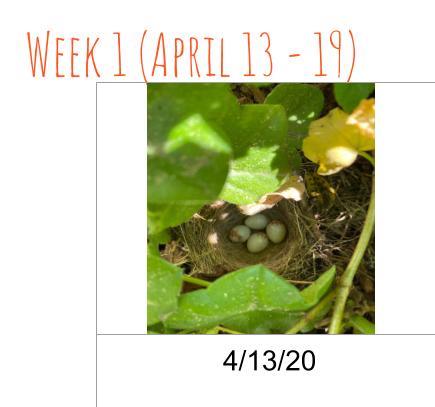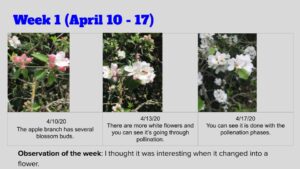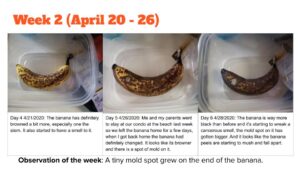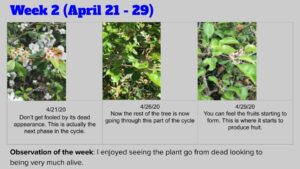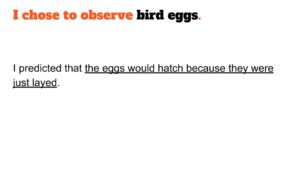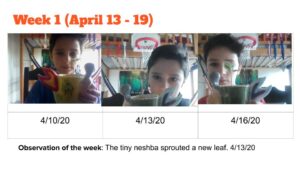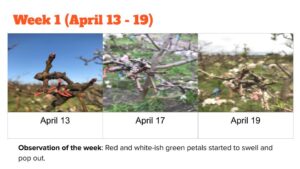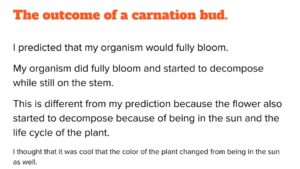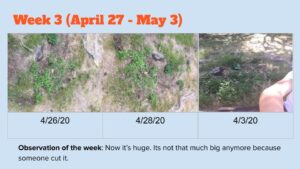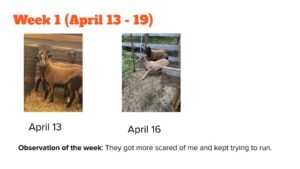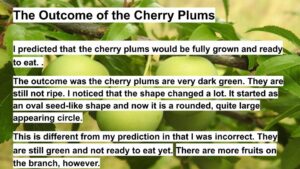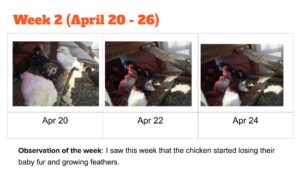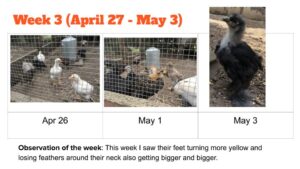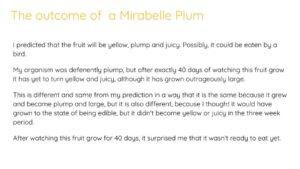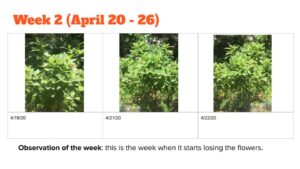 From pet sheep to pear tree buds, sprouting vegetable seeds, raising baby chicks or even an active bird’s nest, Mount Madonna School (MMS) sixth and seventh grade students each chose a living organism to observe closely over a three-week period in April. The students documented the changes they noticed in online journals, and this week the finished projects were presented to their classmates and teacher Hilary Alvarado in the form of a Google slideshow.
From pet sheep to pear tree buds, sprouting vegetable seeds, raising baby chicks or even an active bird’s nest, Mount Madonna School (MMS) sixth and seventh grade students each chose a living organism to observe closely over a three-week period in April. The students documented the changes they noticed in online journals, and this week the finished projects were presented to their classmates and teacher Hilary Alvarado in the form of a Google slideshow.
“I asked students to choose an organism that would make noticeable changes over the given period of time,” shared Alvarado. “During the project they were asked to make careful scientific observations – both quantitative and qualitative – and to collect and record their data on a schedule, for instance, every second or third day.”
Students then wrote a hypothesis of what would happen to their observed organism over the three-week period.
“I predict that the cucumber will grow a lot, but not be fully grown,” shared sixth grader Nina Lima Teachout. “I think this because cucumbers grow very quickly, but three weeks is not enough time for them to be fully grown.”
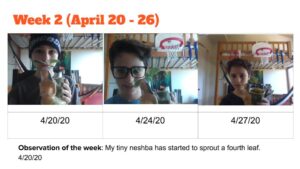 “I predict that the Sour Grass will be wilted and brown, and the petals will be dead instead of yellow, and that the entire plant might be dead,” shared classmate Kaia Mangus. “I think this because the plant has already flowered and grows in spring, so it probably doesn’t have a long life left.”
“I predict that the Sour Grass will be wilted and brown, and the petals will be dead instead of yellow, and that the entire plant might be dead,” shared classmate Kaia Mangus. “I think this because the plant has already flowered and grows in spring, so it probably doesn’t have a long life left.”
“I predict that the chicks will be larger and will grow more feathers,” hypothesized seventh grader Izaak Ocampo-Sobkoviak. “The patterns of their feathers will also change because chickens grow very quickly and their appearance changes quickly.”
Students then made careful observations on a regular schedule, took pictures of their organism to document the changes, and wrote journal entries describing their observations.
“The flower bud is starting to bloom,” wrote seventh grader Kinsey Don Carlos. “It is untwisting and beginning to open.”
“Three of the baby birds have hatched, and are alive, and the fourth egg hasn’t hatched yet,” observed seventh grader Lucy Harris. .
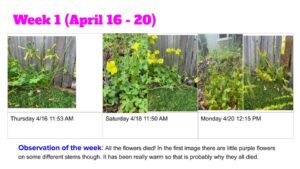 At the end of the observation period, the students revisited their hypotheses, determined whether or not their prediction had come true, and documented the outcome of their organism and any surprising changes that occurred.
At the end of the observation period, the students revisited their hypotheses, determined whether or not their prediction had come true, and documented the outcome of their organism and any surprising changes that occurred.
“In my hypothesis, I predicted that there might be fruit starting to form,” noted seventh grader Emi Lord. “The outcome of my organism was that there were small pear buds on the tree. This is different from my prediction because I predicted that the buds would be larger, and further along in the process.”
“The outcome of my organism was that the chicks got bigger and their feather patterns became more distinct. This is the same as my prediction,” recorded Ocampo-Sobkoviak.
“I predicted that the plant would grow about two to three inches taller,” wrote classmate Lagi Hunnicutt. “And this happened. The little lettuce sprout grew to be about three inches larger than it was when I started!”
Alvarado said the project was intended to train students in scientific thinking – that hypotheses can be written, tested, revisited and revised, and that science demands careful observations and notetaking.
“I greatly enjoyed seeing the wide variety of organisms that students decided to observe for this project, and I believe that the students enjoyed seeing the outcome of their peers’ organisms as well,” commented Alvarado. “I appreciated students’ careful observations, and their dedication to the project over time. With distance learning, so much time is spent on devices, so I developed this project in part to get students away from their computers and outside, in nature.”
###
Contact: Leigh Ann Clifton, director of marketing & communications,
Nestled among the redwoods on 375 acres, Mount Madonna School (MMS) is a community of learners dedicated to creative, intellectual, and ethical growth. MMS supports its students in becoming caring, self-aware, discerning and articulate individuals; and believe a fulfilling life includes personal accomplishments, meaningful relationships and service to society. The CAIS and WASC accredited program emphasizes academic excellence, creative self-expression and positive character development. Located on Summit Road between Gilroy and Watsonville. Founded in 1979.

